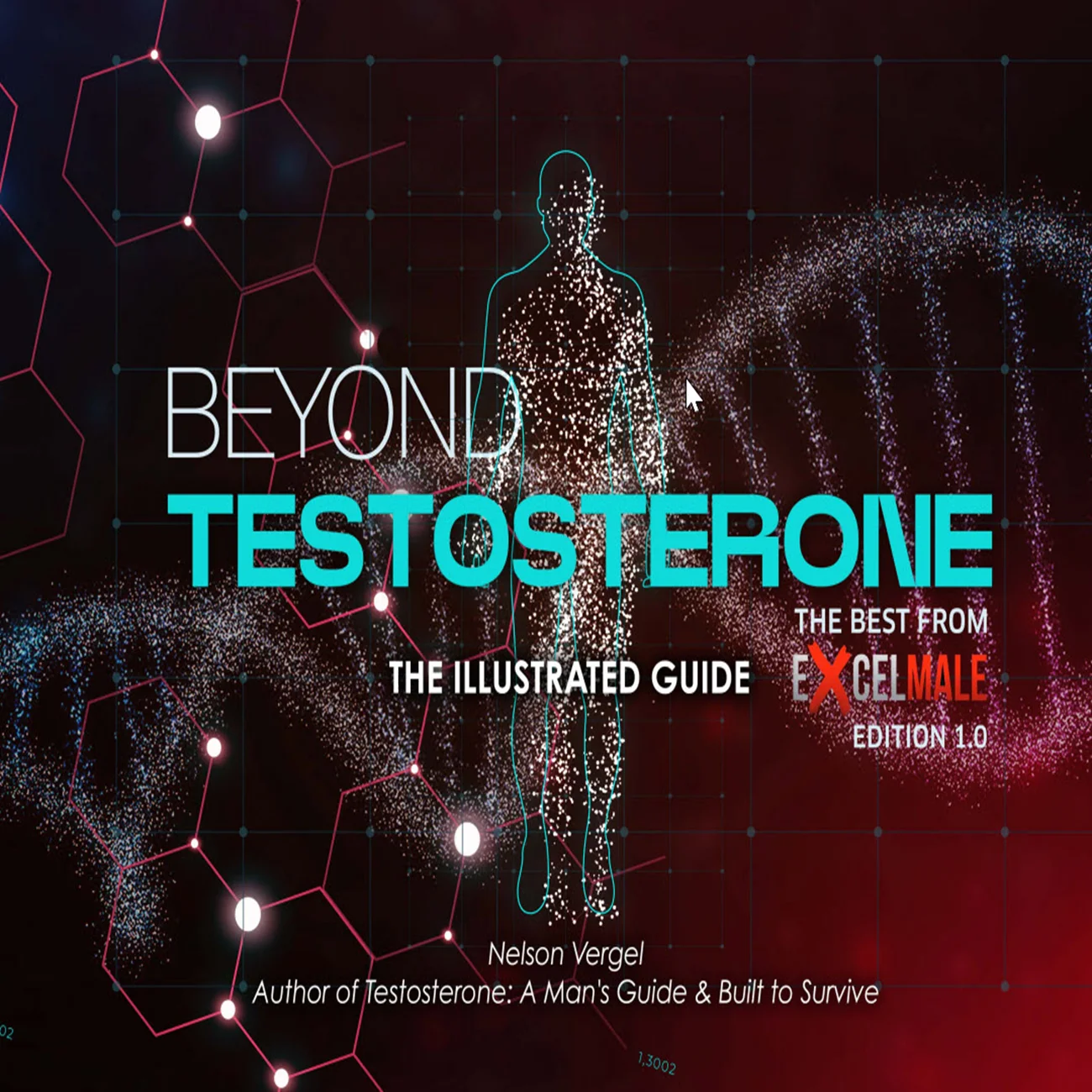Is there any real difference between these 2 forms of oral testosterone? Do they have different half-life's? Does one seem more effective? I'm taking Maximus oral T at the moment 800 mg in the morning. I've been thinking about splitting the dose to 400 in the morning and 400 around lunch time. It seems like this is the normal dosing routine for the Kyzatrex, and I'm wondering if it will also work with the Native-T
You are using an out of date browser. It may not display this or other websites correctly.
You should upgrade or use an alternative browser.
You should upgrade or use an alternative browser.
Kyzatrex vs Maximus Native T
- Thread starter busydad
- Start date
-
- Tags
- kyzatrex maximus oral native t
Guided_by_Voices
Well-Known Member
FunkOdyssey
Seeker of Wisdom
They are not the same thing. Native testosterone is simply testosterone without chemical modification. Testosterone undecanoate modifies testosterone by attaching the undecanoate ester.
Cue someone rushing to reply, "but testosterone undecanoate yields the same bioidentical testosterone molecule when the body removes the ester!" Sure, but until that happens, it's a different molecule with different behavior, otherwise known as "not the same thing".
The half lives are comparable. Testosterone undecanoate is associated with a higher incidence of gastrointestinal complaints. Efficacy is similar.
Cue someone rushing to reply, "but testosterone undecanoate yields the same bioidentical testosterone molecule when the body removes the ester!" Sure, but until that happens, it's a different molecule with different behavior, otherwise known as "not the same thing".
The half lives are comparable. Testosterone undecanoate is associated with a higher incidence of gastrointestinal complaints. Efficacy is similar.
This scenario would require you to obtain multiple prescriptions for the same schedule III substance from multiple providers. Bad things happen at many levels (legal, medical, insurance, provider trust) when you get caught doing this, so no, these different forms of testosterone do NOT work together.It seems like this is the normal dosing routine for the Kyzatrex, and I'm wondering if it will also work with the Native-T
Native testosterone is the term found in the published studies that exist using oral testosterone base. We did not coin the term ourselves. Maximus is an evidence-based, "follow the science" type of organization, so taking our cues from medical literature is the only coherent option for us.Maximus has done a bit of a disservice IMO with the "Native T" terminology.
Last edited:
FunkOdyssey
Seeker of Wisdom
I misread that, sorry. Consult with your Maximus provider, but yes, that works fine in many cases. Roughly 90% of patients stay with the single morning dose and 10% opt for split dosing like you're proposing.I meant splitting the dose in half have taking 400mg in the morning and 400mg at lunch.
...
Cue someone rushing to reply, "but testosterone undecanoate yields the same bioidentical testosterone molecule when the body removes the ester!" Sure, but until that happens, it's a different molecule with different behavior, otherwise known as "not the same thing".
The half lives are comparable. Testosterone undecanoate is associated with a higher incidence of gastrointestinal complaints. Efficacy is similar.
...
Let's ask a different question then. Aside from the possible GI link, have any clinically significant differences been found? If not then the whole "native T" thing still seems like marketing obfuscation to me.
FunkOdyssey
Seeker of Wisdom
Here's your question as I read it: aside from clinically significant differences in side effects, have clinically significant differences been found?Let's ask a different question then. Aside from the possible GI link, have any clinically significant differences been found? If not then the whole "native T" thing still seems like marketing obfuscation to me.
Yes, there are also differences in fasted absorption, and the amount of DHT that results, where native testosterone produces a lower DHT:T ratio then oral TU: https://academic.oup.com/ejendo/article/185/5/607/6654354
Guided_by_Voices
Well-Known Member
Then how is it different from Test-No-Ester or Test-Suspension other than being orally delivered?They are not the same thing. Native testosterone is simply testosterone without chemical modification. Testosterone undecanoate modifies testosterone by attaching the undecanoate ester.
Cue someone rushing to reply, "but testosterone undecanoate yields the same bioidentical testosterone molecule when the body removes the ester!" Sure, but until that happens, it's a different molecule with different behavior, otherwise known as "not the same thing".
The half lives are comparable. Testosterone undecanoate is associated with a higher incidence of gastrointestinal complaints. Efficacy is similar.
This scenario would require you to obtain multiple prescriptions for the same schedule III substance from multiple providers. Bad things happen at many levels (legal, medical, insurance, provider trust) when you get caught doing this, so no, these different forms of testosterone do NOT work together.
Native testosterone is the term found in the published studies that exist using oral testosterone base. We did not coin the term ourselves. Maximus is an evidence-based, "follow the science" type of organization, so taking our cues from medical literature is the only coherent option for us.
madman
Super Moderator
Is there any real difference between these 2 forms of oral testosterone? Do they have different half-life's? Does one seem more effective? I'm taking Maximus oral T at the moment 800 mg in the morning. I've been thinking about splitting the dose to 400 in the morning and 400 around lunch time. It seems like this is the normal dosing routine for the Kyzatrex, and I'm wondering if it will also work with the Native-T
Oral native T is nothing new here!
Look over my reply in post # 29!
Here i thought oral T has ultra low bioavailability and causes the most liver issues esp at 600mg a day im guessing they hope u absorb 1/12 of that or so?
neat but if it was me id make it all sublingual? T included
MADISM!
Not happening!
*An oral dose of 400 mg. testosterone per day is no less than 20-40 times greater than the endogenous testosterone secretion in normal men, and could be regarded as a heavy load on liver metabolism. However, testosterone follows a metabolic pathway in the liver (reduction and coupling to glucuronic acid) which is common...
The main difference here native T is pure crystalline T unmodified as in no ester attached.
Native oral testosterone aims to deliver the unmodified (native) hormone via lymphatic pathways to bypass hepatic first-pass metabolism, similar to TU but without the ester prodrug conversion.
Maximus Tribe's oral native testosterone tablets use a lipid bilayer crystalline formulation of non-esterified T to enhance solubility and absorption.
Taken with some fat will improve absorption.
Testosterone undecanoate is pure native testosterone in crystalline form that has an undecanoate ester attached at the 17β position of the T molecule, which modifies its PK for oral use.
Chemically, it is a prodrug ester of T designed for better oral bioavailability, as unmodified T is poorly absorbed and rapidly metabolized by the liver when taken orally.
The newer oral TU formulations (Jatenzo, Tlando and Kyzatrex) let alone Andriol the granddaddy which has been in use/available on the market for decades were designed to be absorbed through the lymphatic system thus bypassing the destructive first pass through the liver.
Oral TU (Andriol) was introduced to the market in the 70s and was the go to oral T for testosterone replacement as it is non-alkylated and was considered a safe non-hepatotoxic oral androgen for long term substitution in men suffering from hypogonadism.
It was on the market in Canada for decades.
Still on the market in many countries and was the only oral T available in Canada up until recently as it was discontinued in 2018 and replaced with a generic oral TU.
The first of the newer oral formulations of testosterone Jatenzo was approved by the US FDA back in 2019.
Jatenzo was the first non-c17 alpha alkylated oral available on the US market.
Other formulations of oral TU such as Tlando and Kyzatrex were released in 2022.
Again native oral T aims to deliver the unmodified (native) hormone via lymphatic pathways to bypass hepatic first-pass metabolism, similar to TU but without the ester prodrug conversion.
The PKs (oral native T vs oral TU) are not identical as oral TU formulations require hydrolysis by esterases to release active T, leading to delayed and more variable absorption compared to native T.
Due to the slow lymphatic absorption and gradual release/hydrolysis of active T, half-life of serum T concentrations is 8-12 hrs.
The newer oral TU formulations (Jatenzo, Tlando and Kyzatrex) are dose twice-daily due to the PK as there will be a gradual rise resulting in 2 daily fairly short-lived peaks followed by a gradual decline resulting in 2 troughs (close to baseline) and would be more suppressive to the hpta.
Tmax oral TU is achieved 4-5 hours post dose.
Standard starting dose Kyzatrex 200 mg BID as many men can achieve stellar peak TT and more importantly FT levels.
Others will not respond well on the starting dose and will need 300-400 mg BID in order too achieve a high peak T.
No need to jump in on the higher starting dose 300-400 mg BID as you may be one who achieves stellar levels.
Even then steady-state is achieved within a week so you can always bump up the dose fairly quick if you do not hit a high enough peak on the starting dose 200 mg BID.
Maximus oral native T is dosed once daily 600-800 mg and absorbed rapidly with a swift peak in T and a faster decline returning near baseline by 8 hrs.
Once daily dosing and the overall PK profile would result in less suppression of the hpta.
Abstract
Context: There is no licensed oral Native Testosterone (NT) because of challenges in the formulation. Licensed oral formulations of the ester, testosterone undecanoate (TU), require a meal for absorption and generate supraphysiological dihydrotestosterone (DHT) levels.
Objective: To develop an oral NT formulation.
Design and Methods: A lipid-based formulation of native testosterone-filled into soft-gelatin capsules at 40mg per capsule was designed...
- madman
- oral native t
- Replies: 10
- Forum: Testosterone and Men's Health Articles
* different routes of administration for testosterone have been used and native testosterone replacement therapy has been licensed as implants, transdermal, transbuccal, and intranasal therapies (5).
* Testosterone undecanoate (TU) is an ester prodrug of testosterone and has a mid-chain length fatty acid at the 17β position and when given orally undergoes absorption in part through the intestinal lymphatic pathway, so circumventing some of the first-pass metabolism through the liver (4). Oral testosterone undecanoate is presented as an oily capsule and has been available in Europe since the 1970s (1); however, TU has to be taken with a meal two or three times daily, has an unpredictable absorption pattern, and generates high dihydrotestosterone (DHT) to testosterone ratio (8-10). An oral self-emulsifying formulation of TU has recently been approved in the US (Jatenzo®, Clarus Therapeutics Inc., USA). The formulation promotes solubilization and intestinal lymphatic absorption of the lipophilic testosterone ester. Deesterification of TU by nonspecific esterases in liver, blood, and tissue results in the production of testosterone. The liberated undecanoic acid moiety is metabolized via beta-oxidation. 5-Alpha reduction of testosterone undecanoate in the gut produces dihydrotestosterone undecanoate (DHTU) and DHT (11). The testosterone undecanoate formulation has to be taken with food, patients have higher than normal DHT levels on treatment and the label is associated with a black box warning regarding an increase in blood pressure (12). These data support the need for new developments in this area.
* oral formulations of the ester, testosterone undecanoate (TU), require a meal for absorption and generate supraphysiological dihydrotestosterone (DHT) levels.
* Various oral formulations of native testosterone have been tested in man although none have been licensed (13-20). Soon after testosterone’s identification and characterization, oral testosterone administration was disregarded as a viable route of administration and replacement because of poor oral absorption (21). In the 1970s, a micronized form of free testosterone was demonstrated to be absorbed in hypogonadal men but absorption was not reliable enough to progress as therapy (14). Further research, particularly by Amory and coworkers, showed that native testosterone administered as a suspension in oil, provided potentially therapeutic levels of testosterone in healthy men (15), and combined with 5αreductase inhibitors provided physiological testosterone levels both in the fasted and fed state (16). Native testosterone is practically insoluble in water and in fatty oil vehicles (22), and the challenge has been to develop a solution formulation that contains sufficient testosterone concentration to provide reproducible physiological testosterone levels in hypogonadal men. Building upon the previous observations, we have developed a lipidic solution formulation of native testosterone and have tested it in dogs and humans in the fasted and fed state.
Testosterone was isolated, named, and synthesized in 1935 (1), but to date, no oral native testosterone has been licensed for testosterone replacement therapy. The reason being that oral native testosterone, although absorbed through the intestine, undergoes extensive pre-systemic metabolism along the gastrointestinal tract (2), as well as rapid first-pass metabolism in the liver (3). The oral absorption of testosterone is also dependent on the dosing vehicle, wherein a lipophilic vehicle may increase the proportion of testosterone absorbed via the lymphatic route (4). It is thus difficult to achieve adequate bioavailability of testosterone in order to maintain consistent physiological testosterone levels via the oral route. To address this, different routes of administration for testosterone have been used and native testosterone replacement therapy has been licensed as implants, transdermal, transbuccal, and intranasal therapies (5).
Successful outcome of oral testosterone clinical study | Investor or Media Relations
Diurnal is a European, UK-headquartered specialty pharmaceutical company dedicated to developing lifelong treatments for rare and chronic endocrine conditions.
DITEST™
In addition to its hydrocortisone products, Diurnal’s is also developing a novel formulation of testosterone for the treatment of hypogonadism. Male hypogonadism is defined as testosterone levels below 300ng/dL and, like other endocrine disorders, can be of primary (a dysfunction in the testes) or secondary (a dysfunction in other hormone systems) origin. The crude prevalence of androgen deficiencies in the US male population is estimated to be 6%, making...
- madman
- ditest™/oral native testosterone
- Replies: 3
- Forum: Testosterone and Men's Health Articles
Abstract
Introduction
Testosterone deficiency is a clinical disorder due to either failure of the testes to produce testosterone or failure of the hypothalamus or pituitary to produce sufficient gonadotropins. Previous formulations of oral testosterone therapy, particularly methyltestosterone,have been associated with adverse liver effects. Many different routes of testosterone delivery have been developed, each with their own administrative benefits and challenges. Newer formulations of oral testosterone undecanoate (TU) provide a convenient administration option, although...
Introduction
Testosterone deficiency is a clinical disorder due to either failure of the testes to produce testosterone or failure of the hypothalamus or pituitary to produce sufficient gonadotropins. Previous formulations of oral testosterone therapy, particularly methyltestosterone,have been associated with adverse liver effects. Many different routes of testosterone delivery have been developed, each with their own administrative benefits and challenges. Newer formulations of oral testosterone undecanoate (TU) provide a convenient administration option, although...
- madman
- oral testosterone; trt; safety/liver toxicity/dil
- Replies: 6
- Forum: Testosterone and Men's Health Articles
* Diurnal’s DITEST™ product is a formulation of unmodified testosterone that seeks to avoid the issues of poor bioavailability by using a proprietary, oil-based excipient mixture
About native oral testosterone
Native oral testosterone (DNL-0300 previously referred to as DITEST™) is a novel formulation developed by Diurnal comprising native testosterone adapted for oral delivery for the treatment of hypogonadism.The main challenge with oral delivery of native testosterone is that, whilst the hormone undergoes rapid and complete absorption, there is considerable metabolism in both the gut wall and during the first hepatic pass which accounts for up to 98% reduction in testosterone bioavailability (the amount of drug in the body that is able to have an active effect). Diurnal's approach is a proprietary lipid-based formulation that aims to provide improved bioavailability of testosterone. An additional potential feature of the native testosterone formulation demonstrated in both preclinical studies and now in this clinical study is that it shows similar absorption and bioavailability in both the fed and fasted state and therefore potentially can be taken without a substantial meal, which is a requirement with many alternative oral modified-testosterone formulations. Patents protecting DNL-0300 have already been granted in the US, Europe, and other major territories worldwide.
madman
Super Moderator
Here's your question as I read it: aside from clinically significant differences in side effects, have clinically significant differences been found?
Yes, there are also differences in fasted absorption, and the amount of DHT that results, where native testosterone produces a lower DHT:T ratio then oral TU: https://academic.oup.com/ejendo/article/185/5/607/6654354
Did you forget already?
SPINNING!Wtf is "native testosterone"?
Unmodified T!
Oral native testosterone - Excel Male Health Forum
Abstract Context: There is no licensed oral Native Testosterone (NT) because of challenges in the formulation. Licensed oral formulations of the ester, testosterone undecanoate (TU), require a meal for absorption and generate supraphysiological dihydrotestosterone (DHT) levels. Objective: To...
FunkOdyssey
Seeker of Wisdom
No, I was there. What point are you trying to make? Not one of us emerged from the womb knowing what native testosterone was, not even you good buddy.Did you forget already?
SPINNING!Wtf is "native testosterone"?
Unmodified T!

Oral native testosterone - Excel Male Health Forum
Abstract Context: There is no licensed oral Native Testosterone (NT) because of challenges in the formulation. Licensed oral formulations of the ester, testosterone undecanoate (TU), require a meal for absorption and generate supraphysiological dihydrotestosterone (DHT) levels. Objective: To...www.excelmale.com
madman
Super Moderator
No, I was there. What point are you trying to make? Not one of us emerged from the womb knowing what native testosterone was, not even you good buddy.
I ws referring to to the paper I posted in my reply!
You know the one you posted the link to in post #7!
Abstract
Context: There is no licensed oral Native Testosterone (NT) because of challenges in the formulation. Licensed oral formulations of the ester, testosterone undecanoate (TU), require a meal for absorption and generate supraphysiological dihydrotestosterone (DHT) levels.
Objective: To develop an oral NT formulation.
Design and Methods: A lipid-based formulation of native testosterone-filled into soft-gelatin capsules at 40mg per capsule was designed...
- madman
- oral native t
- Replies: 10
- Forum: Testosterone and Men's Health Articles
Here's your question as I read it: aside from clinically significant differences in side effects, have clinically significant differences been found?
Yes, there are also differences in fasted absorption, and the amount of DHT that results, where native testosterone produces a lower DHT:T ratio then oral TU: https://academic.oup.com/ejendo/article/185/5/607/6654354
The improved DHT:T ratio has been below my radar. It's a selling point for me, given my general preference for staying in the confines of normal physiology. There may not be much specific evidence of harm in an elevated ratio, but I'd say the burden of proof should be on those defending the non-physiological.
Ok, I admit that "New and improved DHT:T ratio!" is not a very sexy marketing slogan.
hCG Mixing Calculator
HCG Mixing Protocol Calculator
Similar threads
- Replies
- 75
- Views
- 10K
- Replies
- 4
- Views
- 314
- Replies
- 34
- Views
- 3K
TRT Hormone Predictor
Predict estradiol, DHT, and free testosterone levels based on total testosterone
⚠️ Medical Disclaimer
This tool provides predictions based on statistical models and should NOT replace professional medical advice. Always consult with your healthcare provider before making any changes to your TRT protocol.
ℹ️ Input Parameters
Normal range: 300-1000 ng/dL
Predicted Hormone Levels
Enter your total testosterone value to see predictions
Results will appear here after calculation
Understanding Your Hormones
Estradiol (E2)
A form of estrogen produced from testosterone. Important for bone health, mood, and libido. Too high can cause side effects; too low can affect well-being.
DHT
Dihydrotestosterone is a potent androgen derived from testosterone. Affects hair growth, prostate health, and masculinization effects.
Free Testosterone
The biologically active form of testosterone not bound to proteins. Directly available for cellular uptake and biological effects.
Scientific Reference
Lakshman KM, Kaplan B, Travison TG, Basaria S, Knapp PE, Singh AB, LaValley MP, Mazer NA, Bhasin S. The effects of injected testosterone dose and age on the conversion of testosterone to estradiol and dihydrotestosterone in young and older men. J Clin Endocrinol Metab. 2010 Aug;95(8):3955-64.
DOI: 10.1210/jc.2010-0102 | PMID: 20534765 | PMCID: PMC2913038
Online statistics
- Members online
- 5
- Guests online
- 327
- Total visitors
- 332
Totals may include hidden visitors.
Latest posts
-
-
-
-
-
-
Where to get HCG as of 10/2025
- Latest: t_spacemonkey
-












